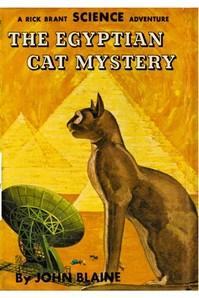Read this ebook for free! No credit card needed, absolutely nothing to pay.
Words: 16760 in 4 pages
This is an ebook sharing website. You can read the uploaded ebooks for free here. No credit cards needed, nothing to pay. If you want to own a digital copy of the ebook, or want to read offline with your favorite ebook-reader, then you can choose to buy and download the ebook.


: The Art and Craft of Printing by Morris William - Kelmscott Press; Printing Great Britain History; Hammersmith (London England) Imprints
: THE WANDERERS. MARCH: ATALANTA'S RACE. THE MAN BORN TO BE KING. Medium 4to. Golden type. In black and red. Borders 27a, 27, 28a, and 28, and woodcut title. 225 on paper at thirty shillings, 6 on vellum at seven guineas. Dated May 7, issued July 24, 1896. Published by William Morris. Bound in limp vellum.
This was the first book printed on the paper with the apple watermark. The seven other volumes followed it at intervals of a few months. None of the ten borders used in The Earthly Paradise appear in any other book. The four different half-borders round the poems to the months are also not used elsewhere. The first border was designed in June, 1895.
This was the first book printed at the Kelmscott Press in three colours. The manuscript from which the poems were taken was one of the most beautiful of the English books in Mr. Morris's possession, both as regards writing and ornament. No author's name is given to the poems, but after this book was issued the Rev. E. S. Dewick pointed out that they had already been printed at Tegernsee in 1579, in a 16mo volume in which they are ascribed to Stephen Langton. A note to this effect was printed in the Chaucer type in Dec. 28, 1896, and distributed to the subscribers.
Two of the initial words from the Chaucer are used in this book, one at the beginning of each poem. These poems were formerly attributed to Chaucer, but recent scholarship has proved that The Floure and the Leafe is much later than Chaucer, and that The Cuckow and the Nightingale was written by Sir Thomas Clanvowe about A. D. 1405-10.
The colophon of this final volume of The Earthly Paradise contains the following note: 'The borders in this edition of The Earthly Paradise were designed by William Morris, except those on page 4 of volumes ii., iii., and iv., afterwards repeated, which were designed to match the opposite borders, under William Morris's direction, by R. Catterson-Smith; who also finished the initial words 'Whilom' and 'Empty' for The Water of the Wondrous Isles. All the other letters, borders, title-pages and ornaments used at the Kelmscott Press, except the Greek type in Atalanta in Calydon, were designed by William Morris.'
It was the intention of Mr. Morris to make this edition of what was since his college days almost his favourite book, a worthy companion to the Chaucer. It was to have been in two volumes folio, with new cusped initials and heraldic ornament throughout. Each volume was to have had a large frontispiece designed by Sir E. Burne-Jones; the subject of the first was to have been St. George, that of the second, Fame. A trial page was set up in the Troy type soon after it came from the foundry, in Jan., 1892. Early in 1893 trial pages were set up in the Chaucer type, and in the list for March 9 of that year the book is erroneously stated to be in the press. In the three following lists it is announced as in preparation. In the list dated Dec. 1, 1893, and in the three next lists, it is again announced as in the press, and the number to be printed is given as 150. Meanwhile the printing of the Chaucer had been begun, and as it was not feasible to carry on two folios at the same time, the Froissart again comes under the heading 'in preparation' in the lists from Dec. 1, 1894, to June 1, 1896. In the prospectus of the Shepheardes Calender, dated Nov. 12, 1896, it is announced as abandoned. At that time about thirty-four pages were in type, but no sheet had been printed. Before the type was broken up, on Dec. 24, 1896, 32 copies of sixteen of these pages were printed and given as a memento to personal friends of the poet and printer whose death now made the completion of the book impossible. This suggested the idea of printing two pages for wider distribution. The half-border had been engraved in April, 1894, by W. Spielmeyer, but the large border only existed as a drawing. It was engraved with great skill and spirit by C. E. Keates, and the two pages were printed by Stephen Mowlem, with the help of an apprentice, in a manner worthy of the designs.
This book, subjects from which were painted by Sir Edward Burne-Jones on the walls of The Red House, Upton, Bexley Heath, many years ago, was always a favourite with Mr. Morris. The frontispiece was not printed until October, 1897, eighteen months after the text was finished.
This is the third and last of the reprints from the Camden Society's volume of Thornton Romances. The text was all set up and partly printed by June, 1896, at which time it was intended to include 'Sir Eglamour' in the same volume.
Of these thirty-five reproductions twenty-nine were all that were done of a series chosen by Mr. Morris to illustrate a catalogue of his library, and the other six were prepared by him for an article in the 4th number of Bibliographica, part of which is reprinted as an introduction to the book. The process blocks were made by Walker & Boutall, and are of the same size as the original cuts.
The two borders used in this book were almost the last that Mr. Morris designed. They were intended for an edition of The Hill of Venus, which was to have been written in prose by him and illustrated by Sir E. Burne-Jones. The foliage was suggested by the ornament in two Psalters of the last half of the thirteenth century in the library at Kelmscott House. The initial A at the beginning of the 3rd book was designed in March, 1893, for the Froissart, and does not appear elsewhere.
This was the last romance by William Morris. He began to write it on Dec. 21, 1895, and dictated the final words on Sept. 8, 1896. The map pasted into the cover was drawn by H. Cribb for Walker & Boutall, who prepared the block. In the edition that Longmans are about to issue the bands of robbers called in the Kelmscott edition Red and Black Skinners appear correctly as Red and Black Skimmers. The name was probably suggested by that of the pirates called 'escumours of the sea' on page 154 of Godefrey of Boloyne.
This was the second book printed in three colours at the Kelmscott Press. As explained in the colophon, the final picture was not designed for this edition of Love is Enough, but for the projected edition referred to above, on page 5.
Free books android app tbrJar TBR JAR Read Free books online gutenberg
More posts by @FreeBooks

: Memoria sobre a descoberta das ilhas de Porto Santo e Madeira 1418-1419 (Fragmento de um livro inedito) by Bettencourt Emiliano Augusto De - Vila de Porto Santo (Madeira Islands); Madeira Islands PT Navegações e Explorações







